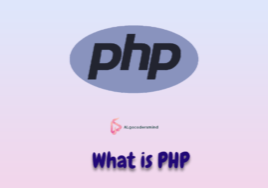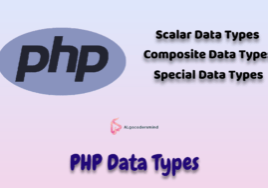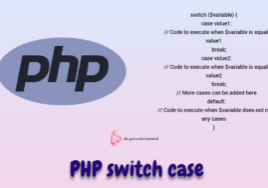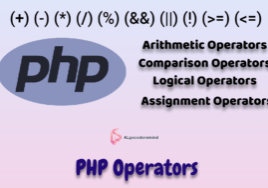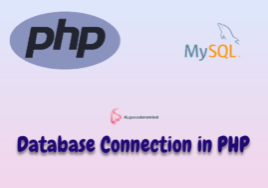Array to String in PHP – A Comprehensive Guide
Introduction to Array to String in PHP
In PHP, arrays and strings are fundamental data types that play a crucial role in handling and manipulating data. Sometimes, we may encounter scenarios where we need to convert an array into a string to store or display the data efficiently. Understanding how to perform this conversion is essential for any PHP developer. In this article, we will explore various methods to convert an array to a string, with a special focus on using a loop for this purpose.
Using a Loop for Array to String Conversion
When dealing with an array, using a loop for the conversion is a common approach. It allows us to process each element in the array individually and concatenate them to form a single string. Let’s dive into the step-by-step guide on how to achieve this conversion:
- Explaining the Need for a Loop
Imagine we have an array with multiple elements. To transform it into a string, we must access each element and combine them together. This is where a loop comes in handy, as it allows us to iterate through the array and concatenate the elements dynamically.
- Step-by-step Guide for Conversion
To start the conversion process, we initialize an empty string variable. Then, we loop through each element of the array, appending it to the string with a separator between elements, such as a comma. This way, the array elements will be merged into a single, comma-separated string.
Let’s illustrate this with a simple PHP code example:
// Sample array
$fruits = array("apple", "banana", "orange", "grape");
// Initialize an empty string
$result = "";
// Loop through the array and concatenate elements
foreach ($fruits as $fruit) {
$result .= $fruit . ", ";
}
// Remove the trailing comma and space
$result = rtrim($result, ", ");
// Output the converted string
echo $result;Running this code will output: “apple, banana, orange, grape.” As you can see, the loop effectively converted the array into a string.
Using PHP Built-in Functions for Array to String Conversion
While using a loop is a reliable method, PHP also provides built-in functions that simplify array to string conversion. The most commonly used function for this purpose is implode(). It takes an array as input and returns a string with the array elements joined by the specified separator.
- Introduction to implode() function
The implode() function in PHP stands for “implode elements of an array into a string.” It takes two parameters: the separator and the array to be converted.
- Demonstrating its Usage with Examples
Let’s see how we can use implode() to achieve the same result as our previous loop-based approach:
// Sample array
$fruits = array("apple", "banana", "orange", "grape");
// Convert array to string using implode()
$result = implode(", ", $fruits);
// Output the converted string
echo $result;The output will be the same: “apple, banana, orange, grape.”
- Introduction to join() function (alias of implode())
Interestingly, implode() has an alias called join() which works exactly the same way. The purpose of join() is to provide developers who are familiar with other programming languages (where join() is a common function) with a familiar syntax in PHP.
- Comparing implode() and join()
Both implode() and join() do the same job and can be used interchangeably. It comes down to personal preference which one to use.
Manual Array to String Conversion
While built-in functions like implode() provide a convenient way to convert arrays to strings, it’s also essential to understand the manual approach as it gives a deeper understanding of the process.
- Iterating through the Array
Manually converting an array to a string involves iterating through the array using a loop, just like we did in the initial example. However, in this approach, we have complete control over the concatenation process and can implement any custom logic if required.
- Concatenating Array Elements
To convert the array manually, we initialize an empty string and iterate through each element, appending it to the string along with any desired separator. Here’s an example:
// Sample array
$colors = array("red", "green", "blue");
// Initialize an empty string
$result = "";
// Loop through the array and concatenate elements
foreach ($colors as $color) {
$result .= $color . "-";
}
// Remove the trailing hyphen
$result = rtrim($result, "-");
// Output the converted string
echo $result;The output will be: “red-green-blue.”
Handling Multidimensional Arrays
So far, we have looked at converting one-dimensional arrays to strings. But what about multidimensional arrays?
- Challenges in Conversion
When dealing with multidimensional arrays, the conversion process becomes more complex. The elements may contain arrays themselves, requiring nested loops to access all the values.
- Nested Loop Approach
To handle multidimensional arrays, we use nested loops to access all the elements and concatenate them accordingly. Let’s take an example:
// Sample multidimensional array
$employees = array(
array("John", "Doe"),
array("Jane", "Smith"),
array("Tom", "Johnson")
);
// Initialize an empty string
$result = "";
// Loop through the array and concatenate elements
foreach ($employees as $employee) {
$result .= $employee[0] . " " . $employee[1] . ", ";
}
// Remove the trailing comma and space
$result = rtrim($result, ", ");
// Output the converted string
echo $result;The output will be: “John Doe, Jane Smith, Tom Johnson.”
Common Mistakes to Avoid
When working with array to string conversion in PHP, there are some common pitfalls that developers should be aware of to ensure accurate results.
- Incorrect Data Types
One common mistake is attempting to convert
an array that contains non-string elements directly. If an array contains integers or other data types, PHP will attempt to convert them to strings automatically, which may not yield the desired outcome.
- Forgetting Array Length
In cases where arrays are dynamically generated, it’s crucial to keep track of their length to avoid unexpected results during conversion. Failing to account for the array length may lead to incomplete or erroneous strings.
Best Practices for Efficient Conversion
To perform array to string conversion efficiently and with accuracy, developers should follow these best practices:
- Choosing the Right Method
Decide whether to use a loop or a built-in function based on the complexity of the array and the desired output. Built-in functions like implode() provide a clean and concise solution for simple arrays.
- Sanitizing Data
Ensure that the array data is properly sanitized before conversion, especially if the array values are user-input or come from external sources. Sanitization prevents security vulnerabilities and ensures reliable string conversion.
Conclusion
In conclusion, understanding array to string conversion in PHP is a fundamental skill for any PHP developer. Whether you choose to use a loop or built-in functions like implode(), the goal is to transform arrays into a well-formatted string for storage or display purposes. Handling multidimensional arrays may require nested loops, and it’s essential to avoid common mistakes and follow best practices to achieve efficient and accurate conversions.
FAQs
- Q: Can I use
join()instead ofimplode()for array to string conversion?
- A: Yes,
join()is an alias ofimplode()and can be used interchangeably.
- Q: What if my array contains non-string elements? Will
implode()still work?
- A: Yes,
implode()can handle non-string elements. PHP will automatically convert them to strings during the process.
- Q: Are there any performance differences between the loop-based and built-in function approaches?
- A: In most cases, the performance difference is negligible. However, for large arrays, built-in functions like
implode()may offer slightly better performance.
- Q: How do I sanitize array data before conversion?
- A: You can use appropriate PHP sanitization functions or data validation techniques to ensure the array contains safe and expected data.
- Q: Can I use custom separators other than commas when converting arrays to strings?
- A: Yes, you can use any character or string as the separator in the conversion process. Simply provide the desired separator as an argument to the
implode()function.
Our Recommendation
- Session and Cookies in PHP: A comprehensive guide
- PHP Data Types – A Comprehensive Guide with Code Examples
- PHP Switch Case: Structure for Efficient Code Execution
- PHP Operators with Code Example: A Comprehensive Guide
- PHP Variable Scope: Mastering the Fundamentals for Efficient Code
- Implode and Explode in PHP tutorial
- PHP String Functions: Enhancing String Manipulation tutorial
- Exploring Array in PHP: A Comprehensive Guide
- Oops Concepts in PHP: A Guide with Code Examples
- Ternary Operator in PHP: Examples and Best Practices
- Pagination in PHP and MySql: Simplify Your Data Display and Navigation
- Secure and Simple: Forgot Password in PHP
- Login in PHP Secure & Reliable
- CRUD Operation in PHP: A comprehensive guide
- Inheritance in PHP: A comprehensive guide
Akhand Pratap Singh
Related Post
Newsletter
Recent Posts
- How to Upload Image into Database Using PHP
- Inheritance in PHP: A comprehensive guide
- Image Resize in Laravel 10 : A comprehensive Guide
- Laravel Passport: A comprehensive guide in Laravel 10
- Laravel JWT Tutorial: A comprehensive guide
- Import and Export Excel in Laravel: A Step-by-Step Guide
- Rest API in PHP: Building Powerful and Scalable Web Services
- Array to String in PHP – A Comprehensive Guide
- Event Loop in JavaScript: A comprehensive guide
- Ternary Operator in JavaScript: A Comprehensive Guide




